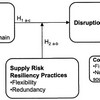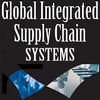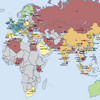 I’ve searched and scoured numerous academic journals in order to find literature I can use for this blog. Sometimes my readers help me and suggest articles I am not yet aware of, and sometimes I stumble upon them myself, accidentally. Today I stumbled upon a 2004 working paper from the Copenhagen Business School (CBS): How risk and uncertainty is used in Supply Chain Management: a literature study of 136 articles since 1970 by Lars Bøge Sørensen, who finished his PhD at CBS in 2005, and who is now a Director of Operational Excellence at PricewaterhouseCoopers.
I’ve searched and scoured numerous academic journals in order to find literature I can use for this blog. Sometimes my readers help me and suggest articles I am not yet aware of, and sometimes I stumble upon them myself, accidentally. Today I stumbled upon a 2004 working paper from the Copenhagen Business School (CBS): How risk and uncertainty is used in Supply Chain Management: a literature study of 136 articles since 1970 by Lars Bøge Sørensen, who finished his PhD at CBS in 2005, and who is now a Director of Operational Excellence at PricewaterhouseCoopers.
Blind?
In hindsight, I should have known better, I’ve come across the scholars from the Copenhagen Business School more than once, but it never occurred to me search their website? Stupid is as stupid does.
Solid work
I am very much impressed with this extensive literature study on risk and uncertainty within Supply Chain Management. It is – by my judgement – better than Vanany et al. (2009). In fact, Sørensen lists 136 articles, compared to Vanany et al.’s only 82 articles, and that’s 5 years later. That said, Vanany et al. do not investigate much earlier than 2000, while Sørensen goes as far back as 1970. And needless to say, Sørensen is a member of ISCRIM.
The classification scheme
Sørensen looks at 23 journals in 3 types of journals:
- Supply Chain Management/Logistics
- 10 journals
- Operations Management
- 4 journals
- Management
- 9 journals
The articles are classified according to orientation:
- Supply
- Internal
- Demand
- Network
and strategic level
- Strategy
- Operational
and the explicit use of theory/framework is listed as well. For each group of journals the common themes in the articles are determined:
- Supply Chain Management/Logistics (36 articles)
- Improving Techniques for Operations
- Risk Management
- Securing the Supply Chain
- Supply Management
- Vulnerability in Physical Flows
- Operations Management (44 articles)
- Improving Techniques for Operations
- Risk Management
- Supply Management
- Management (43 articles)
- Improving Techniques for Operations
- Risk Management
- Risk Preference
- Cross-database (13 articles)
- Improving Techniques for Operations
- Risk Management
- Risk Preference
- Securing the Supply Chain
- Supply Chain Design
- Supply Management
- Vulnerability in Physical Flows
The listings are very structured and there’s a lot work that has gone into it, I can tell that much…impressive, to say the least. For example, here’s the list of SCM/Logistics journals:
The findings
Interestingly, so Sørensen says, the literature study reveals an absence of Risk Management within Supply Chain Management. Despite many efforts related to minimizing uncertainty, and assessing the vulnerability of the market and the internal operations, apparently risk has not been perceived as a parameter for supply chain design. Really? Personally, I beg to differ here. That was 2004 and now is 2009. Risk Management is now increasingly becoming an integral part of Supply Chain Management, at least I hope so. That said, most SCM textbooks still omit any mentioning of supply chain risk or only deal with it on a cursory level, so there’s still a long way to go.
Conclusion
This is the first time I have seen such an extensive literature study on risk in supply chain management. While the articles as such are not reviewed, the classification alone provides a solid framework for further analysis and research. Not only that, I’ve been made aware of journals and articles I never heard about before, and that has added a lot to my own research, and has added even more articles to my never ending literature review of supply chain risk.
Reference
Bøge Sørensen, Lars (2004) How risk and uncertainty is used in Supply Chain Management: a literature study. Working paper 2004-02. Copenhagen: Copenhagen Business School. Available online at http://hdl.handle.net/10398/6296, last accessed: 2009/11/08
Download
Author link
- linkedin.com: Lars Bøge Sørensen
Related
- husdal.com: Supply Chain Risk Management: Literature Review and Future Research (Vanany et al., 2009)














